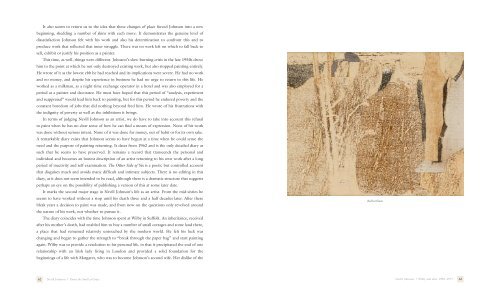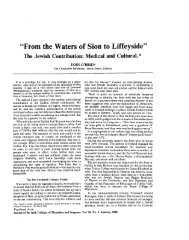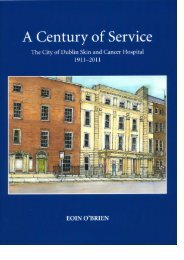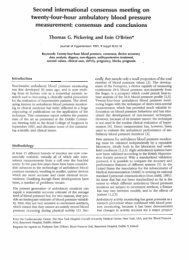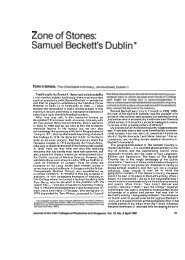Nevill Johnson: Paint the smell of grass - Eoin O'Brien
Nevill Johnson: Paint the smell of grass - Eoin O'Brien
Nevill Johnson: Paint the smell of grass - Eoin O'Brien
You also want an ePaper? Increase the reach of your titles
YUMPU automatically turns print PDFs into web optimized ePapers that Google loves.
It also seems to return us to <strong>the</strong> idea that <strong>the</strong>se changes <strong>of</strong> place forced <strong>Johnson</strong> into a new<br />
beginning, shedding a number <strong>of</strong> skins with each move. It demonstrates <strong>the</strong> genuine level <strong>of</strong><br />
dissatisfaction <strong>Johnson</strong> felt with his work and also his determination to confront this and to<br />
produce work that reflected that inner struggle. There was no work left on which to fall back to<br />
sell, exhibit or justify his position as a painter.<br />
This time, as well, things were different. <strong>Johnson</strong>’s slow-burning crisis in <strong>the</strong> late 1950s drove<br />
him to <strong>the</strong> point at which he not only destroyed existing work, but also stopped painting entirely.<br />
He wrote <strong>of</strong> it as <strong>the</strong> lowest ebb he had reached and its implications were severe. He had no work<br />
and no money, and despite his experience in business he had no urge to return to this life. He<br />
worked as a milkman, as a night-time exchange operator in a hotel and was also employed for a<br />
period as a painter and decorator. He must have hoped that this period <strong>of</strong> “analysis, experiment<br />
and reappraisal” would lead him back to painting, but for this period he endured poverty and <strong>the</strong><br />
constant boredom <strong>of</strong> jobs that did nothing beyond feed him. He wrote <strong>of</strong> his frustrations with<br />
<strong>the</strong> indignity <strong>of</strong> poverty as well as <strong>the</strong> inhibitions it brings.<br />
In terms <strong>of</strong> judging <strong>Nevill</strong> <strong>Johnson</strong> as an artist, we do have to take into account this refusal<br />
to paint when he has no clear sense <strong>of</strong> how he can find a means <strong>of</strong> expression. None <strong>of</strong> his work<br />
was done without serious intent. None <strong>of</strong> it was done for money, out <strong>of</strong> habit or for its own sake.<br />
A remarkable diary exists that <strong>Johnson</strong> seems to have begun at a time when he could sense <strong>the</strong><br />
need and <strong>the</strong> purpose <strong>of</strong> painting returning. It dates from 1962 and is <strong>the</strong> only detailed diary as<br />
such that he seems to have preserved. It remains a record that transcends <strong>the</strong> personal and<br />
individual and becomes an honest description <strong>of</strong> an artist returning to his own work after a long<br />
period <strong>of</strong> inactivity and self-examination. The O<strong>the</strong>r Side <strong>of</strong> Six is a poetic but controlled account<br />
that disguises much and avoids many difficult and intimate subjects. There is no editing in this<br />
diary, as it does not seem intended to be read, although <strong>the</strong>re is a dramatic structure that suggests<br />
perhaps an eye on <strong>the</strong> possibility <strong>of</strong> publishing a version <strong>of</strong> this at some later date.<br />
It marks <strong>the</strong> second major stage in <strong>Nevill</strong> <strong>Johnson</strong>’s life as an artist. From <strong>the</strong> mid-sixties he<br />
seems to have worked without a stop until his death three and a half decades later. After <strong>the</strong>se<br />
bleak years a decision to paint was made, and from now on <strong>the</strong> questions only revolved around<br />
<strong>the</strong> nature <strong>of</strong> his work, not whe<strong>the</strong>r to pursue it.<br />
The diary coincides with <strong>the</strong> time <strong>Johnson</strong> spent at Wilby in Suffolk. An inheritance, received<br />
after his mo<strong>the</strong>r’s death, had enabled him to buy a number <strong>of</strong> small cottages and some land <strong>the</strong>re,<br />
a place that had remained relatively untouched by <strong>the</strong> modern world. He felt his luck was<br />
changing and began to ga<strong>the</strong>r <strong>the</strong> strength to “break through <strong>the</strong> paper bag” and start painting<br />
again. Wilby was to provide a resolution to his personal life, in that it precipitated <strong>the</strong> end <strong>of</strong> one<br />
relationship with an Irish lady living in London and provided a solid foundation for <strong>the</strong><br />
beginnings <strong>of</strong> a life with Margaret, who was to become <strong>Johnson</strong>’s second wife. Her dislike <strong>of</strong> <strong>the</strong><br />
62 <strong>Nevill</strong> <strong>Johnson</strong> l <strong>Paint</strong> <strong>the</strong> Smell <strong>of</strong> Grass<br />
Ballywilliam<br />
<strong>Nevill</strong> <strong>Johnson</strong> l Wilby and after 1959–1977 63


